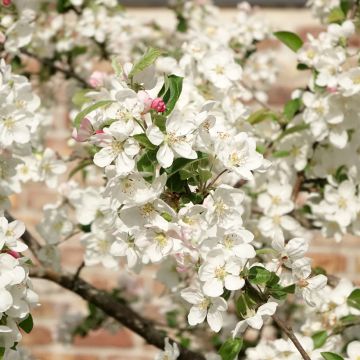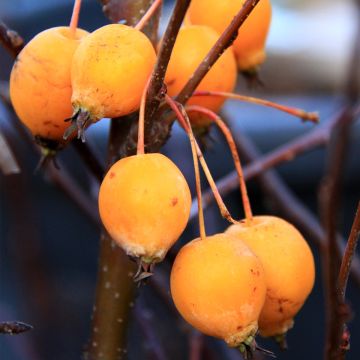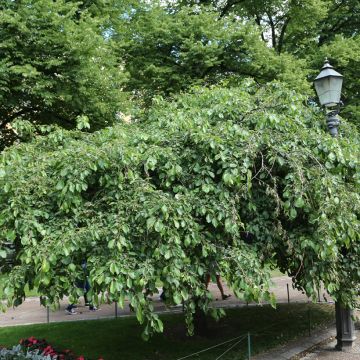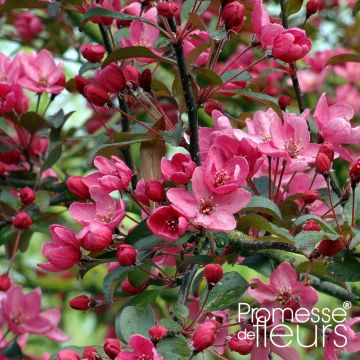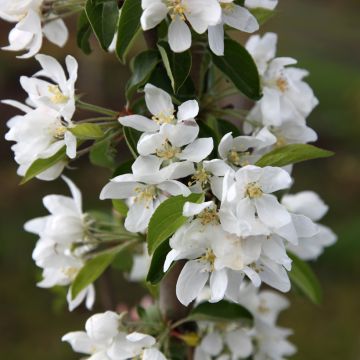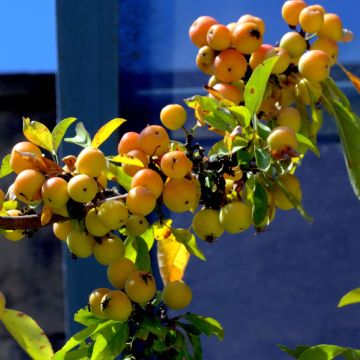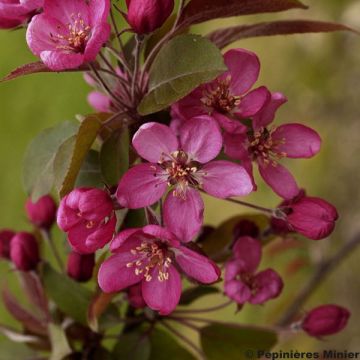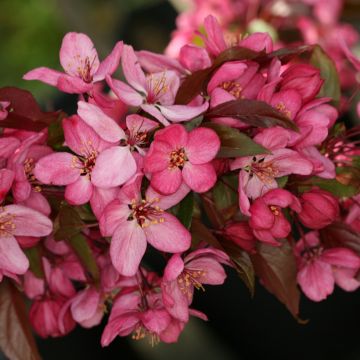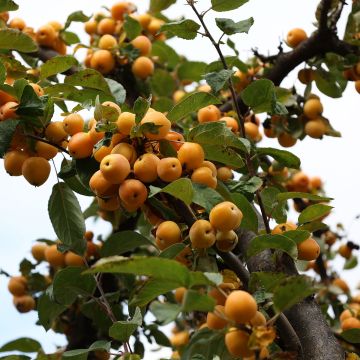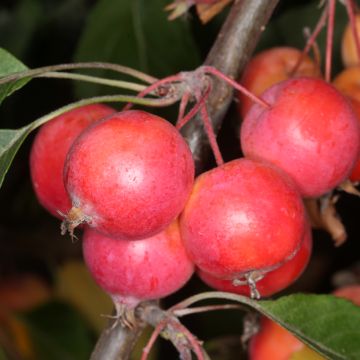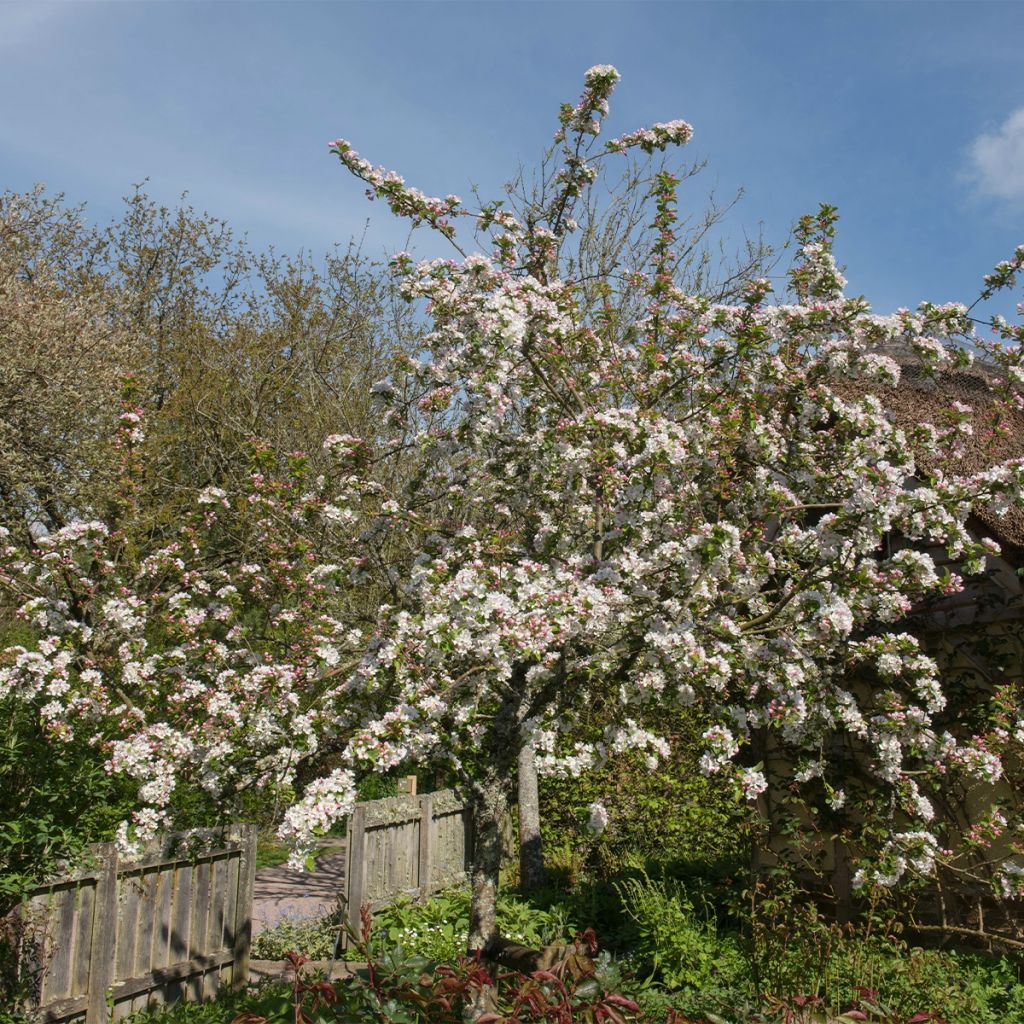

Malus Red Jewel - Crab Apple
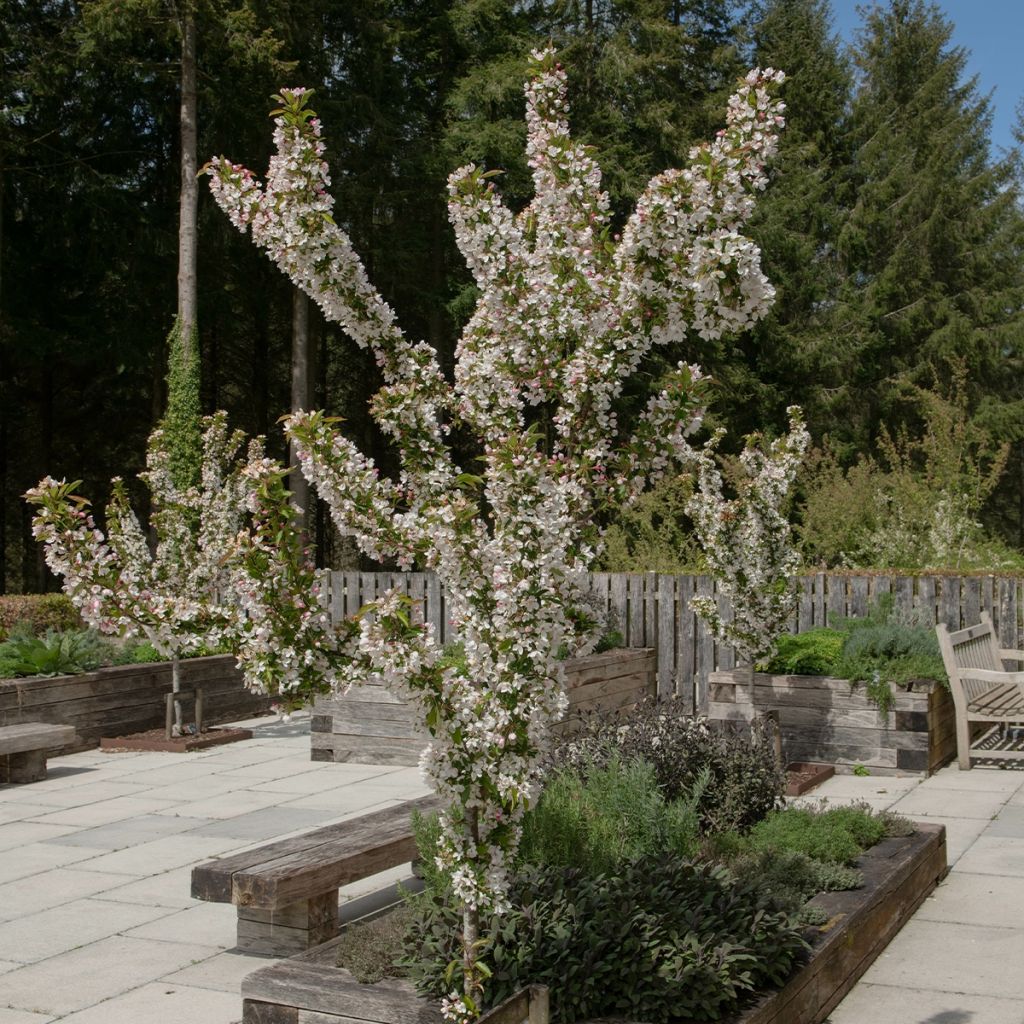

Malus Red Jewel - Crab Apple
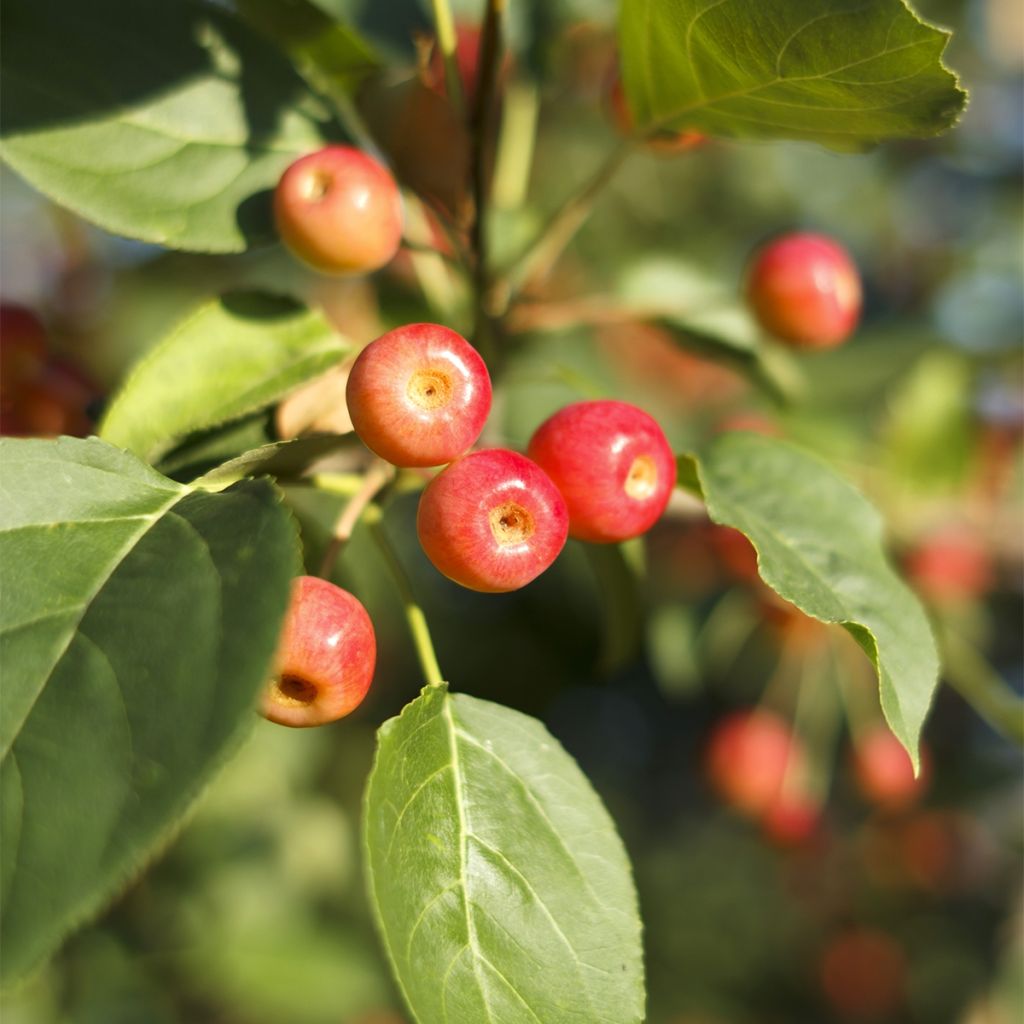

Malus Red Jewel - Crab Apple
Malus Red Jewel - Crab Apple
Malus Red Jewel
Apple Tree, Crab Apple
This item cannot be shipped to the selected country
Oversize package delivery charge from €6.90
More information
Oversize package delivery charge from €6.90
More information
Schedule delivery date,
and select date in basket
This plant carries a 24 months recovery warranty
More information
We guarantee the quality of our plants for a full growing cycle, and will replace at our expense any plant that fails to recover under normal climatic and planting conditions.
Oversize package: home delivery by special carrier from €6.90 per order..
Express home delivery from €8.90.
Does this plant fit my garden?
Set up your Plantfit profile →
Description
Malus Red Jewel is a particularly interesting ornamental Apple tree for small gardens. In spring, it is covered with beautiful single flowers of pure white, fragrant. In autumn, this Apple tree reveals its second asset, adorned with a beautiful orange and then red fruiting reminiscent of cherries that persist on the branches until late winter. It is a small tree with a fairly spreading habit that grows in ordinary soil, preferably slightly clayey, fairly rich, in a sunny position. It can be planted isolated on a short grass meadow or within a flower bed.
The Ornamental Apple trees are derived from various botanical species of the genus Malus belonging to the Rosaceae family, which also obviously includes the fruit apple trees, but also most of our fruit trees (Pear trees, Peach trees, Plum trees...). Hardy, adaptable and easy to grow, flowering apple trees are satisfied with ordinary soil, but prefer loamy, deep, loose and slightly moist soils. Once established, they are low maintenance while maintaining their generous character. Numerous cultivars have emerged in Europe, but also in the United States, these are attractive, but also disease-resistant.
The 'Red Jewel' apple tree is an American selection that is relatively old, dating back to 1971, which is credited to the breeder William H. Collins, from the Cole Nursery. It has long been appreciated for its abundant flowering, as well as its decorative fruits. It is a small tree with a fairly spreading habit and reaches a maximum height of 4 to 5 m (13 to 16ft) at maturity, with a spread of 3 to 4 m (10 to 13ft). After 10 years of planting, it will reach a height of 3 m (10ft) with a width of 2 m (7ft). Therefore, when planting, it is necessary to leave enough space for it, as its moderately fast growth.
In April-May, depending on location, beautiful single, fragrant flowers of about 3.5 cm (1in) in diameter appear, with 5 petals of pure white, with a protruding stamen heart at the yellow tip. Fragrant, they are also produce honey and attract bees and other pollinators. This particularly abundant flowering covers the entire tree, providing a superb spectacle in spring, which is only equalled by its autumn fruiting. From October, this crab apple tree bears a multitude of small spherical fruits, first orange, then turning red. Their colour and size, 12 to 15 mm (1in) in diameter, then resemble cherries. These decorative fruits persist until late winter, making it one of the best decorative fruit trees of this season.
'Red Jewel' proves to be very disease-resistant, being particularly resistant to cankers and showing only slight sensitivity to powdery mildew. It is very hardy, resisting temperatures down to at least -25°C.
The 'Red Jewel' crab apple tree is ideal for small gardens, planted as a specimen, on a lawn for example, where it will be as decorative in spring as in autumn and until winter. Integrated into a flower bed, it can be associated with other plants with a rustic appearance to create a natural scene, appreciated by local fauna, pollinators, and birds. Aronia melanocarpa, a medium-sized shrub with honey-producing white flowers in spring will be a good companion. In autumn, its foliage takes on beautiful colours and it produces black berries that are appreciated by birds and persist for a long time in winter. Plant with buckthorn, or Rhamnus frangula, is a shrub whose discreet flowers are forgiven by its red autumn colours and its decorative red and then black fruits, which birds enjoy. To benefit from decorative fruits earlier in the season, plant with Amelanchier Smoky which will give you black edible fruit from June-July, also usable in pastries and jams. It's not just birds that have the right to feast!
Malus Red Jewel - Crab Apple in pictures
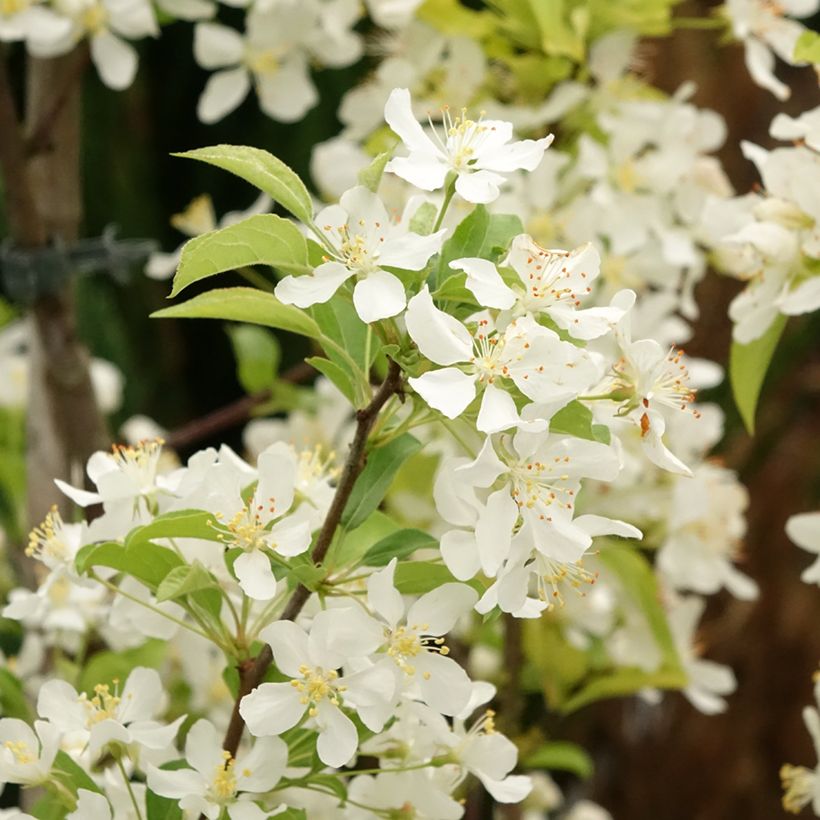

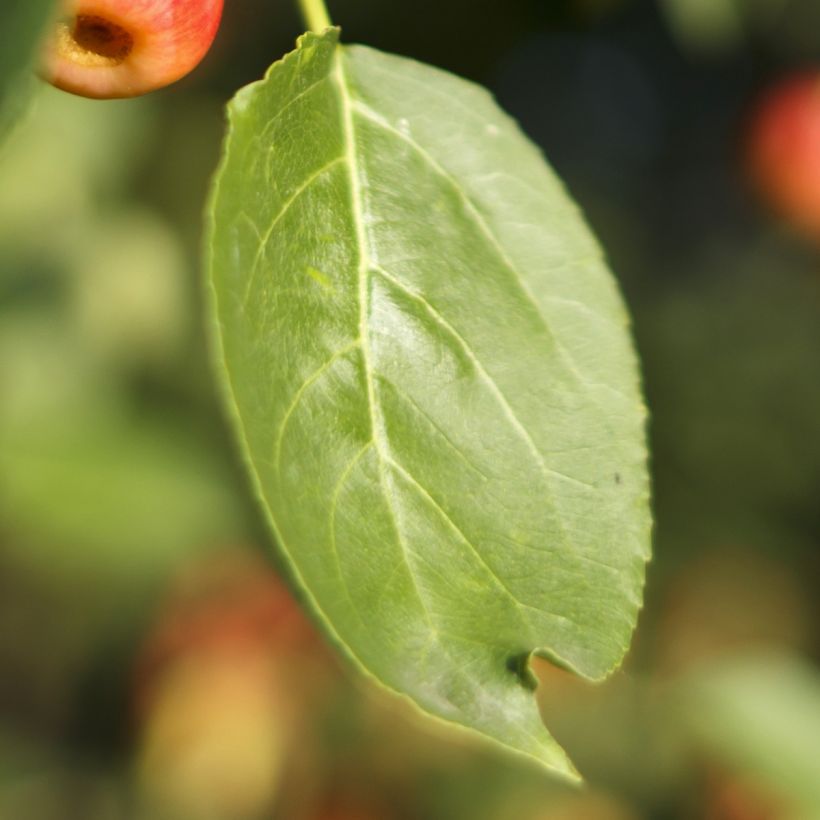

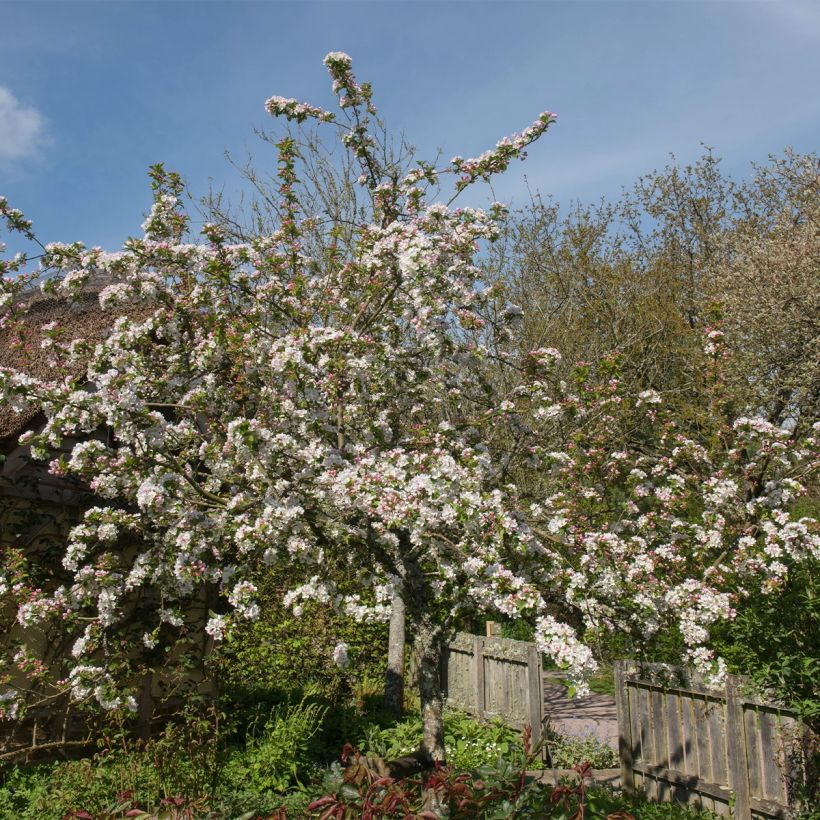

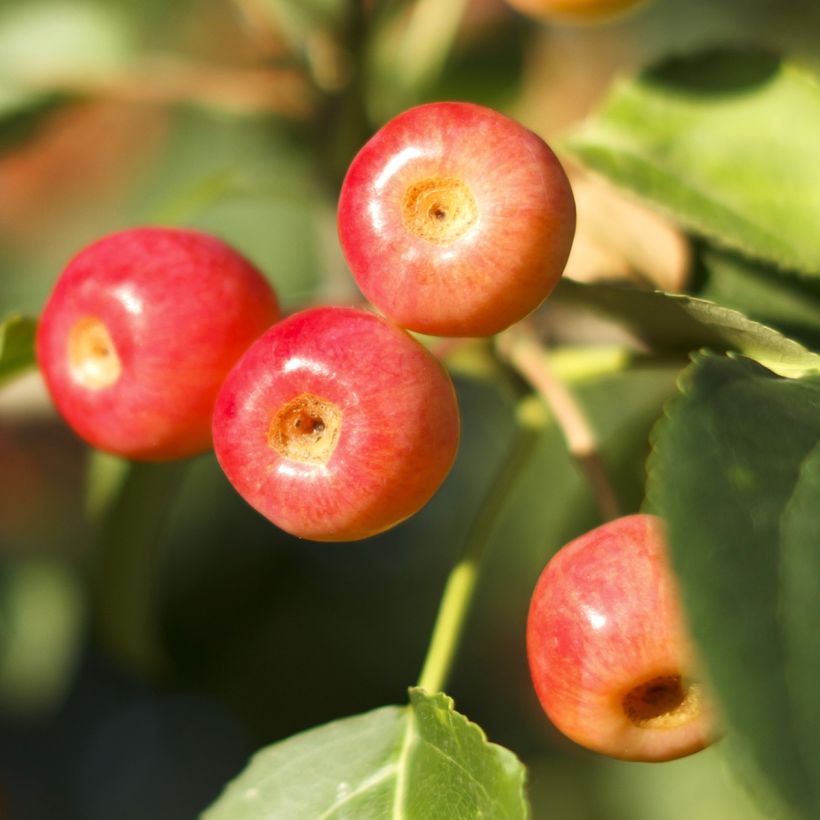

Plant habit
Flowering
Foliage
Botanical data
Malus
Red Jewel
Rosaceae
Apple Tree, Crab Apple
Cultivar or hybrid
Other Malus - Crabapple
Planting and care
Malus Red Jewel requires a bright, sunny exposure and a high-quality soil that is deep, loose, rich, and well-drained, not too dry in summer. It tolerates both limestone and slightly acidic soils if they are rich in humus. Dig a large planting hole. If your soil is poor, add plenty of good quality compost and also apply fertilizer or compost at the base of this plant every spring.
After careful planting and accompanied by regular watering during the first two years, it will generally manage on its own but will suffer in hot and very dry summers. To achieve its full potential, consider its mature size and give it enough space.
Planting period
Intended location
Care
This item has not been reviewed yet - be the first to leave a review about it.
Haven't found what you were looking for?
Hardiness is the lowest winter temperature a plant can endure without suffering serious damage or even dying. However, hardiness is affected by location (a sheltered area, such as a patio), protection (winter cover) and soil type (hardiness is improved by well-drained soil).

Photo Sharing Terms & Conditions
In order to encourage gardeners to interact and share their experiences, Promesse de fleurs offers various media enabling content to be uploaded onto its Site - in particular via the ‘Photo sharing’ module.
The User agrees to refrain from:
- Posting any content that is illegal, prejudicial, insulting, racist, inciteful to hatred, revisionist, contrary to public decency, that infringes on privacy or on the privacy rights of third parties, in particular the publicity rights of persons and goods, intellectual property rights, or the right to privacy.
- Submitting content on behalf of a third party;
- Impersonate the identity of a third party and/or publish any personal information about a third party;
In general, the User undertakes to refrain from any unethical behaviour.
All Content (in particular text, comments, files, images, photos, videos, creative works, etc.), which may be subject to property or intellectual property rights, image or other private rights, shall remain the property of the User, subject to the limited rights granted by the terms of the licence granted by Promesse de fleurs as stated below. Users are at liberty to publish or not to publish such Content on the Site, notably via the ‘Photo Sharing’ facility, and accept that this Content shall be made public and freely accessible, notably on the Internet.
Users further acknowledge, undertake to have ,and guarantee that they hold all necessary rights and permissions to publish such material on the Site, in particular with regard to the legislation in force pertaining to any privacy, property, intellectual property, image, or contractual rights, or rights of any other nature. By publishing such Content on the Site, Users acknowledge accepting full liability as publishers of the Content within the meaning of the law, and grant Promesse de fleurs, free of charge, an inclusive, worldwide licence for the said Content for the entire duration of its publication, including all reproduction, representation, up/downloading, displaying, performing, transmission, and storage rights.
Users also grant permission for their name to be linked to the Content and accept that this link may not always be made available.
By engaging in posting material, Users consent to their Content becoming automatically accessible on the Internet, in particular on other sites and/or blogs and/or web pages of the Promesse de fleurs site, including in particular social pages and the Promesse de fleurs catalogue.
Users may secure the removal of entrusted content free of charge by issuing a simple request via our contact form.

































